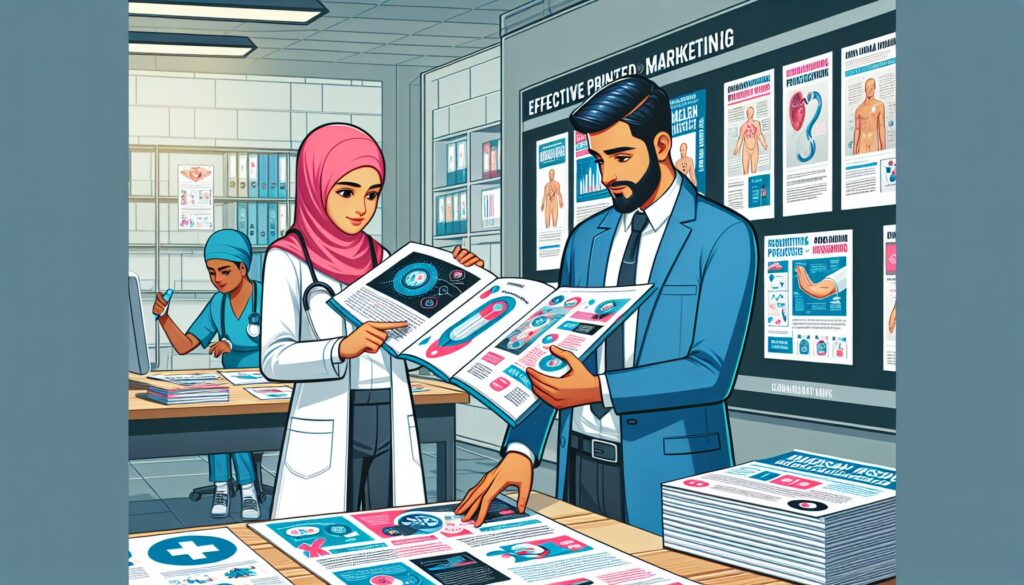In today’s digital age, it’s easy to get caught up in online marketing strategies like social media, email campaigns, and search engine optimization. However, printed marketing materials still play a crucial role in the healthcare industry. From brochures and flyers to posters and business cards, printed materials can help healthcare providers reach their target audience in a tangible and impactful way.
Introduction to Printed Marketing in the Healthcare Industry
Printed marketing materials have been a staple in the healthcare industry for decades. While digital marketing has taken center stage in recent years, printed materials continue to be an effective way to reach patients, promote services, and build brand awareness. Whether it’s a brochure detailing the services offered by a medical practice or a poster advertising a community health event, printed materials provide a physical touchpoint that can leave a lasting impression on patients and healthcare professionals alike.
Benefits of Printed Marketing in the Health Industry
There are several key benefits to incorporating printed marketing materials into a healthcare provider’s overall marketing strategy. Some of the most notable advantages include:
1. Tangibility
Printed materials provide a tangible representation of a healthcare provider’s brand. Patients can hold a brochure, flyer, or business card in their hands, making it easier for them to remember the provider’s name and contact information. This physical touchpoint can help establish trust and credibility with patients.
2. Reach
Printed materials have the potential to reach a wider audience than digital marketing alone. While online ads can be easily overlooked or ignored, printed materials can capture the attention of patients in waiting rooms, community centers, and other public spaces. This broad reach can help healthcare providers attract new patients and build relationships within the community.
3. Branding
Printed materials offer a unique opportunity to showcase a healthcare provider’s brand identity. From color schemes and typography to messaging and imagery, printed materials can help convey the values and mission of a healthcare practice. Consistent branding across all printed materials can help reinforce a provider’s reputation and build brand recognition.
4. Personalization
Printed materials can be customized to suit the specific needs and preferences of a healthcare provider. Whether it’s a personalized brochure for a specific service or a targeted postcard for a particular demographic, printed materials can be tailored to deliver a personalized message to patients. This level of customization can help healthcare providers connect with patients on a more personal level.
Examples of Effective Printed Marketing in the Health Industry
There are numerous ways healthcare providers can leverage printed materials to promote their services, educate patients, and engage with the community. Some examples of effective printed marketing strategies in the health industry include:
1. Brochures
Brochures are a versatile and informative way to showcase the services offered by a healthcare provider. Whether it’s a general overview of the practice or a detailed guide to a specific treatment, brochures can help educate patients and build trust in the provider’s expertise.
2. Flyers
Flyers are a cost-effective way to promote upcoming events, special offers, or new services. Healthcare providers can distribute flyers in high-traffic areas like coffee shops, libraries, and community centers to attract new patients and generate interest in their practice.
3. Posters
Posters are a visually engaging way to communicate important information to patients. Whether it’s a poster promoting a health fair or a poster highlighting the benefits of a new treatment option, posters can capture the attention of patients and encourage them to learn more about their healthcare options.
4. Business Cards
Business cards are a professional and convenient way for healthcare providers to share their contact information with patients. A well-designed business card can leave a positive impression on patients and make it easy for them to follow up with the provider for appointments or inquiries.
Conclusion
While digital marketing continues to evolve and expand, printed marketing materials remain a valuable tool for healthcare providers looking to connect with patients, promote services, and build brand awareness. From brochures and flyers to posters and business cards, printed materials offer a tangible and impactful way to reach a target audience and deliver personalized messages. By incorporating printed marketing into their overall marketing strategy, healthcare providers can enhance their visibility, credibility, and engagement within the community.…




